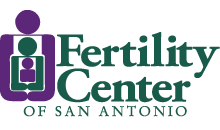Discover your path to parenthood today.
The Basic Steps of IVF
In order to undergo in vitro fertilization (IVF), patients will need to be in good overall health. In addition to maintaining a healthy diet and exercise, you should also avoid alcohol and tobacco use. These recommendations apply to both male and female patients since positive lifestyle habits can help ensure healthy sperm. We will help you and your partner understand how to prepare during a personal consultation. By following the doctor’s recommendations as closely as possible, you can achieve the best results.
IVF is a multi-step process that includes pre-treatment, treatment, and post-treatment. In general terms, IVF involves fertilizing eggs in a laboratory and then implanting healthy embryos into the uterus of the mother or surrogate. When you decide to undergo IVF treatment at the Fertility Center of San Antonio, our experienced doctors will advise you on what to expect during each step. We want our patients to feel informed and confident in their decisions throughout their care.
Ovulation induction is performed to help ensure the maximum number of healthy eggs can be harvested. This procedure involves administering fertility medications to stimulate the development and release of eggs. To ensure successful ovulation induction, we will carefully monitor the patient by measuring her hormones and using ultrasound technology. By increasing the number of potential eggs that can be fertilized, we improve a patient’s chances of success.
Our experienced doctors can typically perform egg retrieval in less than an hour. The egg retrieval process involves using an ultrasound-guided needle to extract healthy eggs from the ovaries of a patient or donor. These eggs can then be combined with sperm in a laboratory setting. We perform egg extraction using anesthesia to ensure a patient’s comfort. Any pain experienced after the procedure can typically be managed with an over-the-counter medication.
During fertilization, healthy eggs will be combined with sperm in a petri dish with a special medium. For best results, the ratio is typically 75,000 sperm for every one egg. The eggs and sperm are then left to incubate, during which time natural fertilization can take place. If the process is successful, these fertilized eggs will develop into embryos. Embryo development takes place during the embryo culture stage, which can last anywhere from two to six days, depending on doctor and patient preferences.
Placing the embryos in the uterus can typically be completed in just five minutes without the need for anesthesia. To help ensure that the embryos are successfully implanted, we will determine the best insertion point prior to treatment. We will likely transfer more than one embryo for best results, but this will be determined during a consultation with your doctor. Once embryo transfer has taken place, patients will wait two weeks before testing for pregnancy.
After completing a session of IFV, patients will undergo a pregnancy test to determine if treatment was successful. We will measure the patient’s levels of human chorionic gonadotropin (hCG) hormone. If IVF was successful, you will be advised to maintain regularly scheduled visits with your primary care physician or obstetrician. Otherwise, we will reevaluate and plan the next treatment steps. Patients who are pregnant will also undergo ultrasound examinations so that we can evaluate the health of the fetus.


















